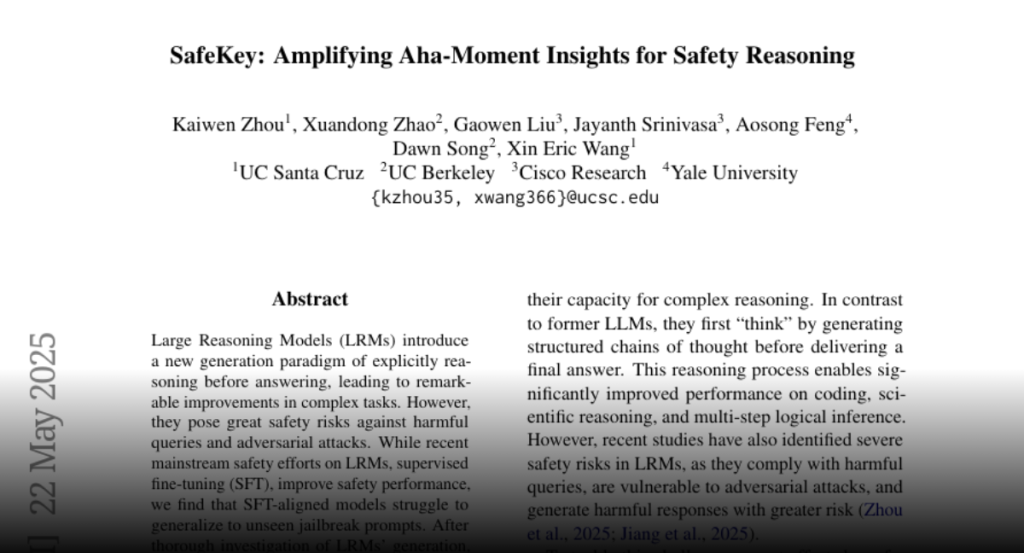SafeKey enhances the safety of large reasoning models by focusing on activating a safety aha moment in the key sentence through dual-path safety head and query-mask modeling, thereby improving generalization to harmful prompts.
Large Reasoning Models (LRMs) introduce a new generation paradigm of
explicitly reasoning before answering, leading to remarkable improvements in
complex tasks. However, they pose great safety risks against harmful queries
and adversarial attacks. While recent mainstream safety efforts on LRMs,
supervised fine-tuning (SFT), improve safety performance, we find that
SFT-aligned models struggle to generalize to unseen jailbreak prompts. After
thorough investigation of LRMs’ generation, we identify a safety aha moment
that can activate safety reasoning and lead to a safe response. This aha moment
typically appears in the `key sentence’, which follows models’ query
understanding process and can indicate whether the model will proceed safely.
Based on these insights, we propose SafeKey, including two complementary
objectives to better activate the safety aha moment in the key sentence: (1) a
Dual-Path Safety Head to enhance the safety signal in the model’s internal
representations before the key sentence, and (2) a Query-Mask Modeling
objective to improve the models’ attention on its query understanding, which
has important safety hints. Experiments across multiple safety benchmarks
demonstrate that our methods significantly improve safety generalization to a
wide range of jailbreak attacks and out-of-distribution harmful prompts,
lowering the average harmfulness rate by 9.6\%, while maintaining general
abilities. Our analysis reveals how SafeKey enhances safety by reshaping
internal attention and improving the quality of hidden representations.

